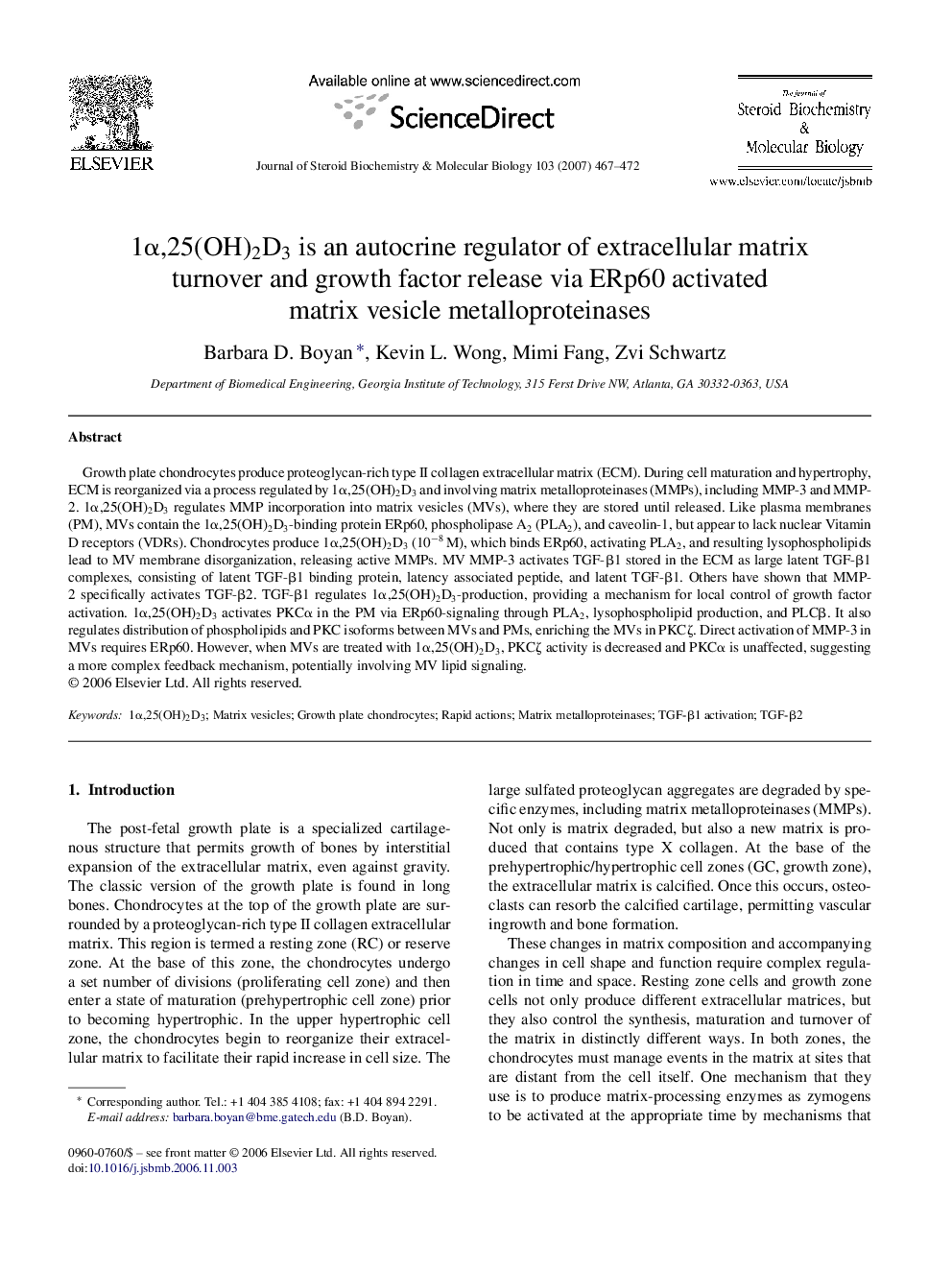| Article ID | Journal | Published Year | Pages | File Type |
|---|---|---|---|---|
| 1992563 | The Journal of Steroid Biochemistry and Molecular Biology | 2007 | 6 Pages |
Growth plate chondrocytes produce proteoglycan-rich type II collagen extracellular matrix (ECM). During cell maturation and hypertrophy, ECM is reorganized via a process regulated by 1α,25(OH)2D3 and involving matrix metalloproteinases (MMPs), including MMP-3 and MMP-2. 1α,25(OH)2D3 regulates MMP incorporation into matrix vesicles (MVs), where they are stored until released. Like plasma membranes (PM), MVs contain the 1α,25(OH)2D3-binding protein ERp60, phospholipase A2 (PLA2), and caveolin-1, but appear to lack nuclear Vitamin D receptors (VDRs). Chondrocytes produce 1α,25(OH)2D3 (10−8 M), which binds ERp60, activating PLA2, and resulting lysophospholipids lead to MV membrane disorganization, releasing active MMPs. MV MMP-3 activates TGF-β1 stored in the ECM as large latent TGF-β1 complexes, consisting of latent TGF-β1 binding protein, latency associated peptide, and latent TGF-β1. Others have shown that MMP-2 specifically activates TGF-β2. TGF-β1 regulates 1α,25(OH)2D3-production, providing a mechanism for local control of growth factor activation. 1α,25(OH)2D3 activates PKCα in the PM via ERp60-signaling through PLA2, lysophospholipid production, and PLCβ. It also regulates distribution of phospholipids and PKC isoforms between MVs and PMs, enriching the MVs in PKCζ. Direct activation of MMP-3 in MVs requires ERp60. However, when MVs are treated with 1α,25(OH)2D3, PKCζ activity is decreased and PKCα is unaffected, suggesting a more complex feedback mechanism, potentially involving MV lipid signaling.
